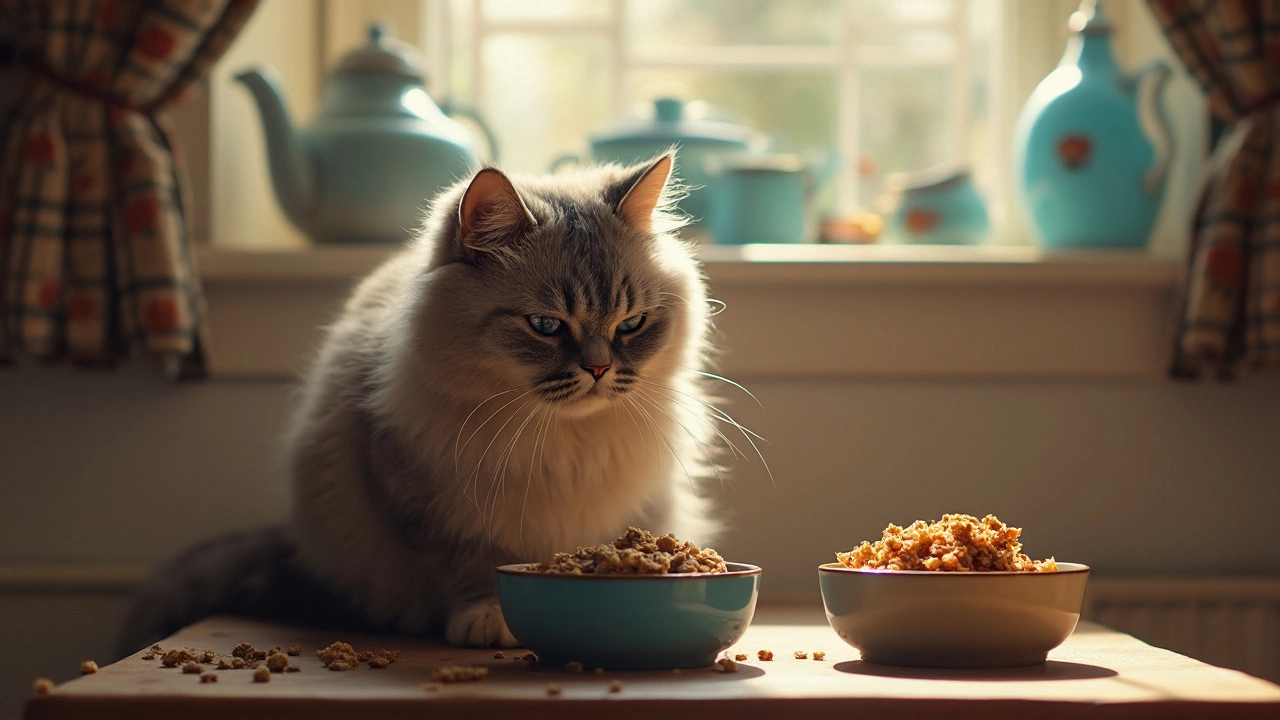Cat Food Nutrition Guide: What Every Owner Should Know
If you’ve ever stared at a bag of kibble and wondered if it’s really good for your kitty, you’re not alone. The right food can boost coat shine, keep teeth clean, and help your cat feel energetic. Below you’ll find the basics you need to pick a diet that actually works for your feline.
Wet vs Dry: Which Is Better?
Wet food packs more moisture, so it helps cats stay hydrated—especially important for indoor cats who don’t chase water sources. It also tends to smell and taste better, which can encourage picky eaters. Dry kibble, on the other hand, is convenient, cheap, and great for dental health because the crunch can reduce plaque. The best approach is often a mix: serve wet meals for hydration and dry kibble to keep teeth healthy between feeds.
Top Nutrients Every Cat Needs
Proteins are the foundation—cats are obligate carnivores, meaning they need real meat to thrive. Look for named animal proteins like chicken, salmon, or turkey as the first ingredient. Taurine is a must; without it, cats can develop heart and eye problems. Good sources include meat and organ meals. Omega‑3 fatty acids support a glossy coat and brain health, so fish oil or flaxseed are worth the extra cost. Finally, keep an eye on calories; obesity is a common issue and can lead to diabetes.
Brands matter, but the label tells the story. In our comparison of Purina versus IAMS, we found both offer balanced nutrition, yet some formulas include fillers that add empty calories. If you spot corn, wheat, or soy high on the list, consider swapping to a grain‑free option. Many boutique brands, like those featured in our "Best Cat Food" article, focus on limited ingredients and higher meat ratios, which many cats love.
When you’re choosing a food, think about your cat’s life stage. Kitten formulas are higher in calories and DHA for brain growth. Adult foods aim for maintenance, while senior diets lower calories and add joint‑supporting supplements like glucosamine. Feeding the wrong life‑stage food can cause weight gain or nutrient deficiencies.
Transitioning to a new diet should be gradual. Mix a teaspoon of the new food with the current one, and increase the new portion over a week. This helps avoid digestive upset and gives your cat time to adjust to new flavors.
If your cat is a picky eater, try topping dry kibble with a spoonful of wet food or a sprinkle of freeze‑dried meat. Small changes can make a big difference in acceptance. Some owners also find that warming wet food slightly boosts aroma, making it more enticing.
Remember, treats are fine in moderation, but they shouldn’t replace balanced meals. Stick to treats that list real meat as the first ingredient and keep them under 10% of daily calories.
Keeping your cat’s water bowl fresh and placing it near food can encourage extra drinking, especially if you feed mostly dry kibble. Some cats prefer running water; a pet fountain can be a simple solution.
In short, the best cat diet combines high‑quality protein, essential nutrients like taurine and omega‑3s, and appropriate moisture. Mix wet and dry, watch labels, match the food to your cat’s age, and transition slowly. Follow these steps and you’ll give your feline a solid nutritional foundation for a happy, healthy life.

Pate vs Shreds Cat Food: Which Texture Wins for Your Feline?
Wondering if pate or shreds is better for your cat? Explore texture, nutrition, and tips for picky eaters to help your cat thrive.
View more